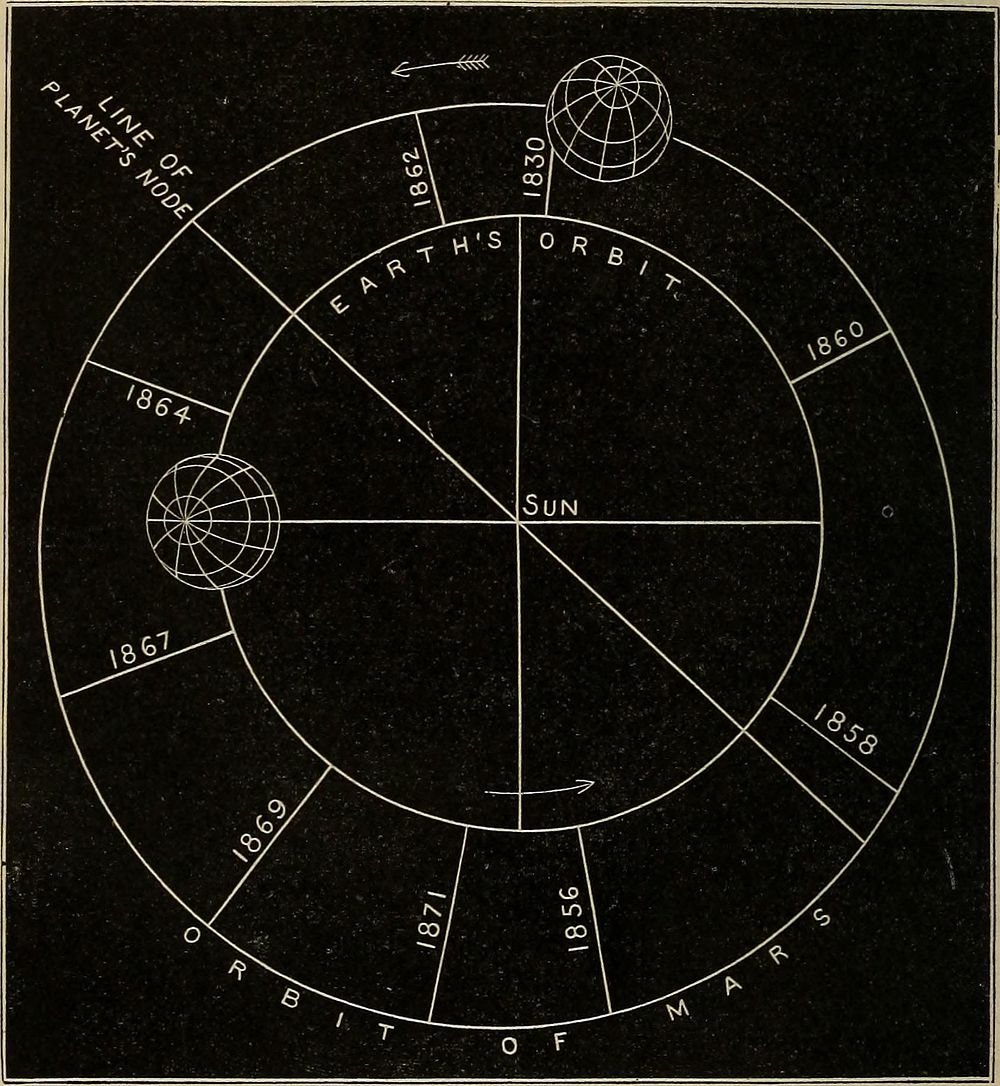https://creativecommons.org/publicdomain/zero/1.0/https://www.rawpixel.com/image/9976023

Identifier: elementsofastron00lock (find matches)Title: Elements of astronomy: accompanied with numerous illustrations, a colored representation of the solar, stellar, and nebular spectra, and celestial charts of the northern and the southern hemisphereYear: 1875 (1870s)Authors: Lockyer, Norman, Sir, 1836-1920Subjects: AstronomyPublisher: New York, D. Appleton and companyContributing Library: The Library of CongressDigitizing Sponsor: The Library of CongressView Book Page: Book ViewerAbout This Book: Catalog EntryView All Images: All Images From BookClick here to view book online to see this illustration in context in a browseable online version of this book.Text Appearing Before Image:8. Path of Venus among theStars.—Fig. 81 represents the pathof Venus, as seen from the Earthfrom April to October, 1868. A study of it should make what has been said about the planets to differ from that of the Sun? 377. Why does not the distance of aplanet from the plane of the ecliptic vary as regularly, when seen from the Earth,as it would do if seen from the Sun ? When will a planet appear in the ecliptic ? 210 APPAKENT PATHS OF THE PLANETS. apparent motions of the planets quite clear. From Aprilto June the planets north latitude is increasing, whilethe node and stationary-point—which in this case coin-cide, though they do not always do so—are reached aboutthe 25th of June. The southern latitude rapidly increases,until, on the 9th of August, the other stationary-point isreached, after which the south latitude decreases. 379. Effect of the Ellipticity and Inclination of theOrbit in the case of Mars.—The apparent path of aplanet, then, is affected by the motions of the EarthText Appearing After Image:Fig. 82.—The Orbits of Maes and the Earth. 378. What does Fig. 81 represent? Describe the path of Venus, as thus ex- OBBITS OF THE EAETH AND MAES. 211 and the inclination of its own orbit. If we examineinto the position of the orbit of Mars, for instance, moreclosely than we have hitherto done, we shall see howthe ellipticity of the orbit and its inclination affect our ob-servations of the* physical features of the planet. Fig. 82shows the exact positions in space of the orbits of theEarth and Mars, and the amount and direction of the in-clination of their axes, and the line of the nodes of Mars;both planets are represented in the positions they occupyat the winter solstice of the northern hemisphere. Thelines joining the two orbits indicate the positions occupiedby both planets at successive oppositions of Mars, at whichtimes, of course, Mars, the Earth, and the Sun, are in thesame straight line (leaving the inclination of the orbit ofMars out of the question). It is seen that at tNote About ImagesPlease note that these images are extracted from scanned page images that may have been digitally enhanced for readability - coloration and appearance of these illustrations may not perfectly resemble the original work.
Original public domain image from Wikimedia Commons
Public DomainFree CC0 image for Personal and Business use